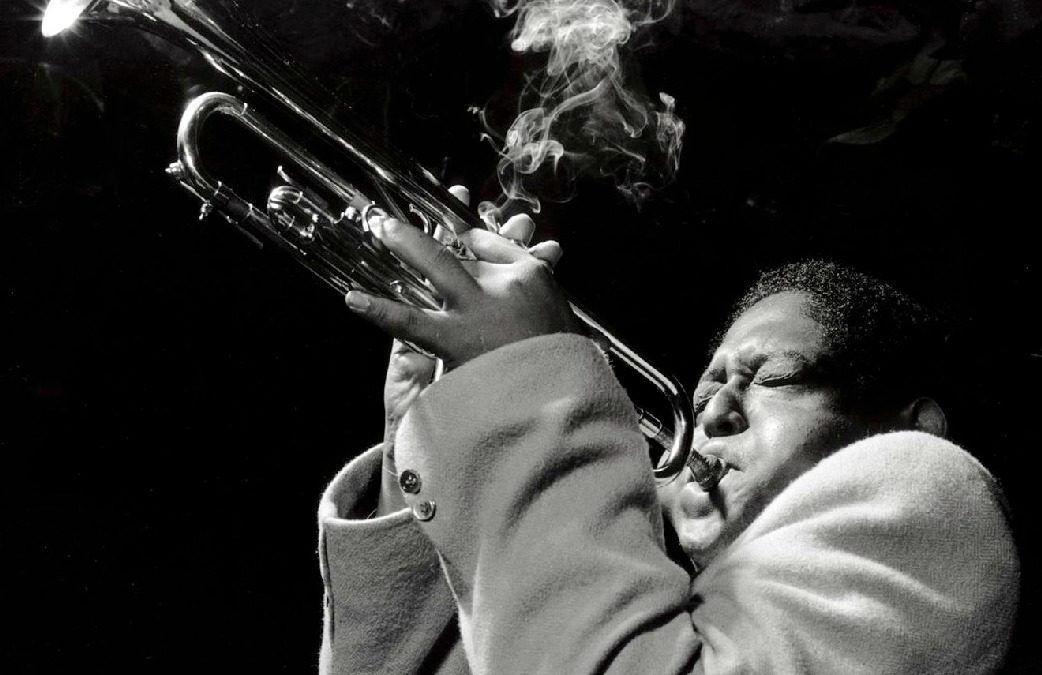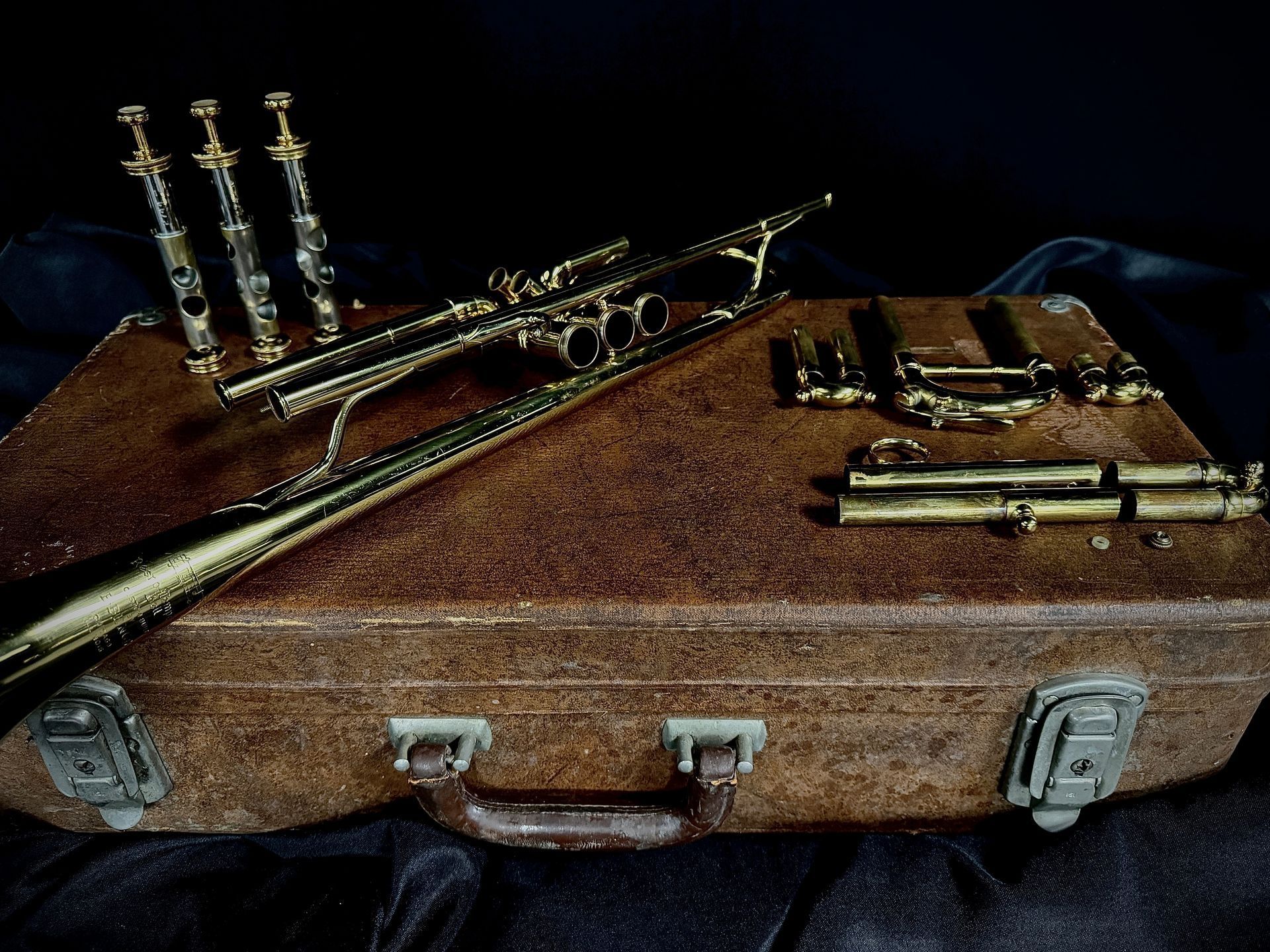How to Pack a Trumpet for Shipment
TIPS FOR SECURELY PACKING A TRUMPET
Packing a Trumpet for Shipping to Ensure It Arrives Safely: A Step-by-Step Guide (VIDEO)
I’ve shipped and received hundreds of trumpets - some were shipped in cases, others were not. I have never had a horn damaged in shipping that was packed using the tips below. Others might have a different method, but this has worked well for me.
- Start With a Sturdy Box
A double-wall box is best. Ensure the box is not damaged and is structurally intact. The box should be big enough that the trumpet can have approximately 2" of space on all sides.
- Tape the Bottom of the Box
Use more tape than you think you need. Use at least 3 strips lengthwise and 3 strips widthwise. Alternate to form an overlapping lattice pattern.
- If You Are Shipping in a Case: Secure the Trumpet
Add packing material (peanuts, bubble wrap, paper) inside the case to prevent the horn from jostling. Use enough material to keep the horn stable without forcing the case shut. Wrap loose items like mouthpieces separately and secure them inside the case or ship separately. It's important to note that most trumpets that are damaged in transit are damaged inside a trumpet case. If a trumpet rattles around inside a case for hundreds of miles, no amount of bubble wrap on the outside of the case can prevent it from being damaged.
- If You Are Shipping Without a Case: Create a "Trumpet Burrito"
Wrap the trumpet in multiple layers of 1" bubble wrap. Alternate wrapping lengthwise and widthwise. Use more than you think you need. Ensure the bell and mouthpiece receiver are both covered well. Secure the bubble wrap in the middle and both ends with tape. Fold excess bubble wrap over the bell and mouthpiece receiver and secure with more tape.
- Add Packing Peanuts to the Bottom of the Box
If shipping without a case, the goal is to surround the "trumpet burrito" with approximately 2" of additional packing material on all sides. Put packing material in the bottom of the box, place the trumpet in the box, and then add more packing material on all sides to secure the trumpet. I prefer packing peanuts, but you could also use paper, styrofoam, more bubble wrap, etc. If you have secured the trumpet within a hard trumpet case, you only need to use enough packing material to ensure the trumpet case doesn't bounce around inside the shipping box. - Seal the Box
Close the box and tape the top in the same manner that you taped the bottom forming a lattice pattern for strength and security.
- Mark as FRAGILE
Ensure the box is clearly labeled as FRAGILE, either with stickers or by simply writing the word FRAGILE in large letters. - Add the Shipping Label
The shipping label should either be in a plastic sleeve with adhesive backing or should be fully covered in tape to prevent it from being damaged or torn off in transit. (Heritage Trumpets uses and recommends Shippo for great customer service, up to 90% off carrier prices, and reasonable insurance options.)
By following these steps, you can ensure your trumpet is well-protected during transit. Hope this helps!
Heritage Trumpets specializes in unique and vintage trumpets, and we're here to help you find an instrument that matches your needs and preferences.
- Have questions? Send us an email or a text message
- Looking for a vintage trumpet? Check out our store
- Have a trumpet to sell? Tell us about it

Fats Navarro was one of the most influential trumpet players ever, a player whose soaring lines and impeccable phrasing helped shape the bebop revolution. Born Theodore Navarro on September 24, 1923, in Key West, Florida, his sound both bold and unmistakable. His work with bebop legends like Charlie Parker, Tadd Dameron, and Bud Powell cemented his place in jazz history, yet his career was tragically brief. Navarro’s life was cut short at just 26, but his influence on trumpet players and jazz musicians remains undeniable. Here are 10 things you might not know about Fats Navarro: 1. A Unique Multicultural Background With Cuban, African American, and Chinese ancestry, Navarro’s heritage made him one of the most diverse figures in early bebop. Growing up in Key West, a cultural crossroads, played a significant role in shaping his musical sensibilities. ( Source ) 2. Piano Came First Before becoming a trumpet icon, Navarro started on piano at just six years old. By thirteen, he had switched to trumpet, demonstrating an early ability to adapt and master new instruments. ( Source ) 3. A Brief Stint with the Tenor Saxophone Not many know that Navarro also played the tenor saxophone professionally before fully committing to the trumpet. This versatility helped shape his approach to phrasing and melodic construction. ( Source ) 4. The Nickname He Couldn’t Shake Despite being widely known as “Fat Girl,” a name derived from his stocky build and high-pitched voice, Navarro was not fond of the nickname. ( Source ) 5. A Lasting Influence on Clifford Brown Many trumpet players idolized Navarro, but none more so than Clifford Brown. Brown cited Navarro’s fluid technique, warm tone, and fearless approach to bebop as a primary influence on his own development. ( Source ) 6. Legendary Sessions with Tadd Dameron Some of Navarro’s most memorable recordings came from his collaboration with pianist and arranger Tadd Dameron. Pieces like “The Chase” and “Lady Bird” remain bebop essentials. ( Source ) 7. He Was Bilingual Navarro was bilingual, speaking both English and Spanish fluently. This ability allowed him to communicate effortlessly with musicians from New York’s Latin jazz community. ( Source ) 8. Honored by Metronome Magazine Recognition of Navarro’s genius came early—he was honored by Metronome magazine multiple times which led to recording with the prestigious Metronome All-Stars in 1948, which included Charlie Parker and other bebop greats. ( Source ) 9. The Battle with Tuberculosis Struggles with heroin addiction weakened Navarro’s immune system, making him vulnerable to tuberculosis. His declining health ultimately led to his passing in 1950 at the young age of 26. ( Source ) 10. His Trumpets of Choice Navarro was known to have played an French Besson trumpets , which are known for their rich, warm tone. Besson trumpets were also played by other jazz greats, including Miles Davis and Lee Morgan. ( Source ) Essential Fats Navarro Performances: To truly appreciate Navarro’s genius, check out these iconic recordings:







